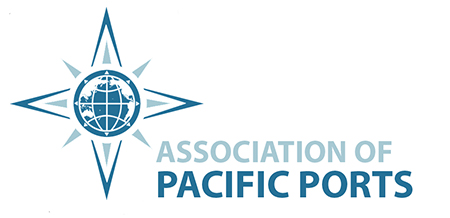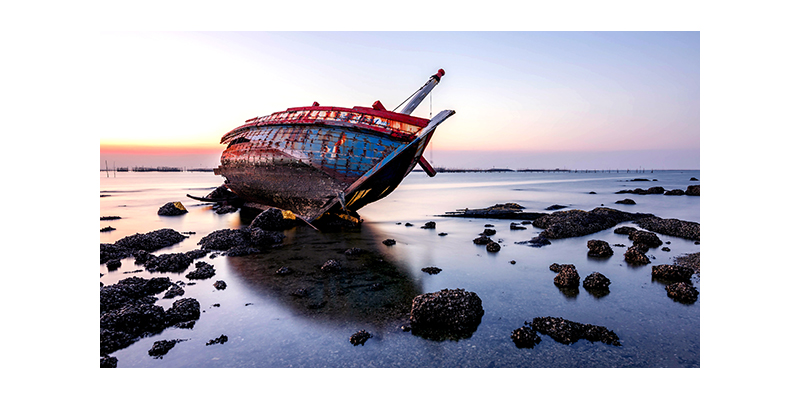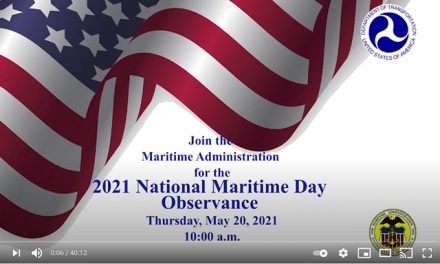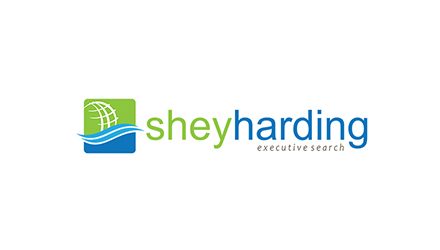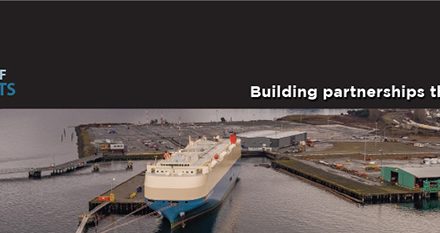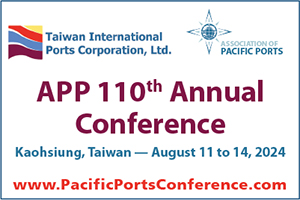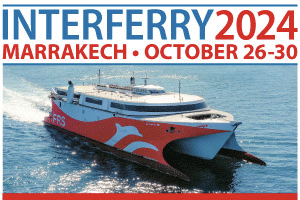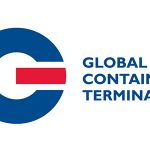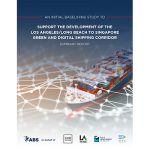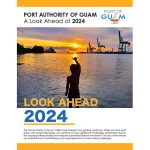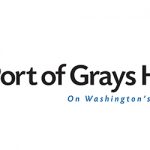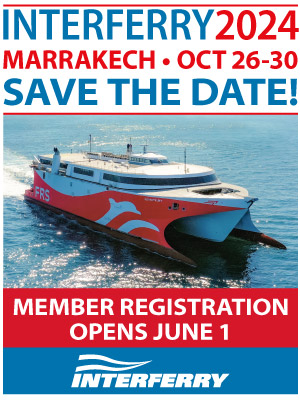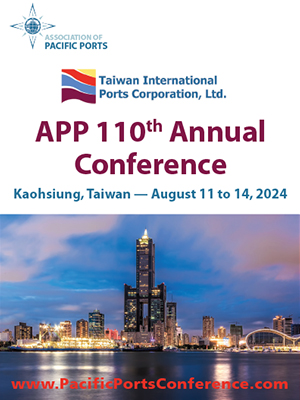Navigational hazards, threats to the environment and just plain eye sores. There’s not a port in the world that isn’t familiar with the headaches posed by abandoned and derelict vessels (ADVs). While logistical issues of removal will vary from jurisdiction to jurisdiction and vessel to vessel, there are two challenges that are constant for all — the cost, and who pays. Strained government budgets try to keep up but as the cost of removal usually far outweighs the amounts available, all too often, the burden falls to ports. However, that’s not always the case.
In keeping with the APP’s mandate of highlighting best practices and creating awareness of innovations that might just work in your jurisdiction, the following focus on Washington State demonstrates how collaboration, partnerships and policy are coming together to provide the gold standard in addressing the issue of abandoned vessels.
In context
Singling out Washington was not the original intent of this article. Other U.S. states as well as Canada, Australia and Pacific Rim countries have programs that are equally active and dedicated to the ADV problem however, Washington’s recent passing of legislation in June 2020, demonstrates how strengthening laws addressing ADVs can provide for continual improvements to prevention and enforcement as well as ongoing and sustainable funding.
“Hands down, the greatest prohibitive factor/challenge in dealing with abandoned and derelict vessels, is cost,” writes Kirk Nichols, Assistant Chief, Harbor Police at the Port of San Diego, California. A comment echoed by other APP members and non-members. “In our port, we currently have four abandoned vessels that the port will pay to dispose of,” writes Ken Range, Commissioner for the Port of Brookings Harbor, Oregon. It was Range’s enquiries that led to this article.
In summarizing expenses, Nichols cites “the commercial towing of the vessel, temporary storage of the vessel waterside, removal of the vessel to a long-term storage lot, and subsequent destruction and hazardous materials (oil, fuel, batteries) clean-up costs. If the vessel sinks before it can be towed, or if it breaks loose of its anchor/mooring and runs aground, these events can significantly increase the costs for removal. In some cases, this can be three to four times the expense of towing the vessel while it is afloat.”
Government grants and programs, while providing useful guidance and assistance, only go so far. Take California for example, Nichols noted that grants from the State are available however, expenses “significantly exceed any grant funding each year.” The Oregon State Marine Board sets aside US$150,000 every two years that is collected from recreational boater titling and registration fees. In the first 14 months of the current funding period, US$108,000 had already been spent with additional removals still pending. The funds are made available to public enforcement agencies, but as indicated by Range, ports continue to shell out thousands in removal costs. And in Alaska and Guam, while there is currently ADV legislation, there is no formal program or dedicated funding source. Hawaii has legislation and a Derelict Vessel Program but with no funding.
Other countries find themselves in the same situation. In Canada, a total of about CDN$7 million was allocated through two programs for a five-year period to cover the entire country (the Ship-source Oil Pollution Fund is an additional source in cases where there is an imminent danger of oil leakage). Australia’s Queensland government established a “War on Wrecks” program in 2018 that allocated AU$20 million over four years. Since that program was put in place, Maritime Safety Queensland has removed almost 700 derelict vessels from the coast and estimate there are another 300 still to tackle.
Prevention is still the best medicine
Government regulations across all jurisdictions are quick to note the liability of vessel owners for removal costs. Finding owners and recouping costs, however, is easier said than done. While government regulations will often lay out a framework for defining when a vessel is considered to be abandoned, who can take possession, owner notification, and options for removal (including the sale of the vessel if feasible), the process is often a lengthy one and can only be effective if proper documentation of ownership exists. Recognizing this obstacle, the Alaska State Government, for example, brought in legislation in 2019 that expanded vessel registration. As was quickly learned by Alaskan authorities, communication, and community buy-in were essential to success.
Vessel turn-in programs in Washington, Oregon, and California all garner high-praise from port and marina operators. Looking at California’s program, Kristine Zortman, Executive Director, and Steve Longoria, Interim Director of Operations, Port of Redwood City, both praised the SAVE (Surrendered and Abandoned Vessel Exchange) Program, previously referred to as the Vessel Turn-in Program. “Since 2014, the Port of Redwood City has effectively cleared Redwood Creek by removing over 30 abandoned or derelict vessels; from small 15-foot crafts, to large 2,000-square-foot boathouses. The Port just received another SAVE grant for the 2020-2022 fiscal years, providing a continuing resource to keep Redwood Creek clear of abandoned vessel hazards, while protecting our adjacent natural habitats.”
Profit and non-profit organizations also provide programs that assist with the efforts of preventing larger problems down the road. In British Columbia, non-profit societies, such as the Dead Boats Disposal Society or donated-boat programs such as the Disabled Sailing Association of BC or the Sail and Life Training Society provide solid alternatives (and tax receipts) to owners who may be tempted to simply walk away from their aging vessel.
What Washington gets right
At the national level, the National Oceanic and Atmospheric Administration’s (NOAA) Marine Debris Program is undoubtedly the champion for implementing strategies and plans that address abandoned and derelict vessels under the larger topic of marine debris. Having 10 dedicated regional coordinators positioned across U.S. coastal states and territories including the Great Lakes, NOAA works closely with state governments and local groups to tailor Marine Debris Action Plans that include goals, strategies, and actions for specific regions.
In their 2020 Accomplishments Report, NOAA Marine Debris Program Director Nancy Wallace summed up the root of the Program’s success: “As I reflect on the past five years and our strategic plan comes to a close, I am reminded of the unique collaborations, creative approaches, and growing national and international attention focused on the pervasive global problem of marine debris. During this period, we grew, learned, adapted, and accomplished a great deal. As you read through this report, I ask you to think about the power of collective action and how together, we can achieve a global ocean and its coasts free from the impacts of marine debris.”
Building on NOAA’s strategy of prevention, removal, research, regional coordination, and emergency response, state government departments and non-profit organizations have built programs unique to their own jurisdictions. None more so than Washington State.
The Department of Natural Resources (DNR) established their Derelict Vessel Removal Program (DVRP) in 2002 and since then, have removed more than 900 abandoned vessels from Washington waterways. While the program has always enjoyed a high success rate in dealing with abandoned vessels, recent improvements to legislation have recognized that there is always more that can be done.
First and foremost, Washington’s funding model is unique. As far back as 2003, state legislators established a dedicated derelict vessel removal account within the state treasury and stipulated that all funds collected from the Revised Code of Washington covering Derelict Vessels, reimbursement for costs from owners of derelict vessels and a specified portion of vessel registration fees, as well as any gifts, grants, or endowments from public or private resources, be deposited into this account. Recreational vessel registration fees include US$2 for the fund as well as a US$1 surcharge to address the significant backlog of derelict vessels, and US$5 per registration from non-resident permits. The fund also receives US$1 per foot from commercial vessel registration. Unlike Oregon or California, there is no cap on the fund and the account is set apart from general revenue accounts.
With approximately 242,000 boats registered in the State of Washington (and about 1,300 commercial vessels), the fund contributes upward of US$700,000 to $800,000 annually to the removal of ADVs in perpetuity. While DVRP Manager Troy Wood suggested that more funding would always be welcome, the amount does allow the DNR to deal with emergency situations as well as provide outreach and education initiatives. While the funding formula is slightly more complicated than the outline above, Washington still has one of the strongest funding models on the Pacific Coast.
Wood noted that, over the past few years, the DVRP has shifted its focus from being reactionary to having a more proactive strategy. To bolster their efforts, additional improvements to the legislation include:
The removal of a $200,000 funding cap for the DNR’s Vessel Turn-in Program.
Reducing the length of a vessel from 65 feet to 35 feet for vessels subject to secondary liability law. Sellers of smaller boats now have to have the vessel surveyed and provide the buyer and DNR with a copy of the survey. The seller must also require the buyer to show proof of insurance for the vessel. The reduced length requirement allows for a larger number of vessels to be captured under the program.
Extending the ticketing authority of the DNR to now include vessels that are not properly licensed or registered with the state (albeit, Wood indicated that ticketing would be used as a “last-ditch effort” to encourage responsible vessel ownership).
Despite having only three team members to deal with the entire state, Wood and his department have been receiving high marks from stakeholders. Darla Pyke, Harbormaster for La Conner Marina and RV Park with the Port of Skagit, was quick to point out that their “comprehensive website” was helpful in providing guidance with procedures in reporting derelict vessels. DNR received additional high marks for their inventory databases of vessels removed and vessels of concern.
And it doesn’t stop there. New initiatives and partnerships continue to look for solutions. For example, Sea Grant Washington has initiated a study to look at a fiberglass recycling program. With an estimated 170,000 fiberglass vessels within Washington, this single project has the potential to divert two million pounds of waste from state landfills each year as well as provide another end-of-life option for boat owners.
Lessons in best practices
There are many factors that play into Washington State’s success in addressing the problem of ADVs.
The political will to continually improve legislation; support from boater alliances; the efforts of NOAA and their collaboration with DNR; and the inclusion of many stakeholders and not-for-profit organizations have all contributed to moving Washington’s program forward. Strong outreach and communication have also played a key role.
Not to diminish the efforts of other states and countries — all of whom provide programs and legislation that recognize the importance of abandoned and derelict vessel removal – it is apparent that Washington State has been able to leverage all of the factors into a cohesive strategy that can stand as an example of best practice in ADV management.
